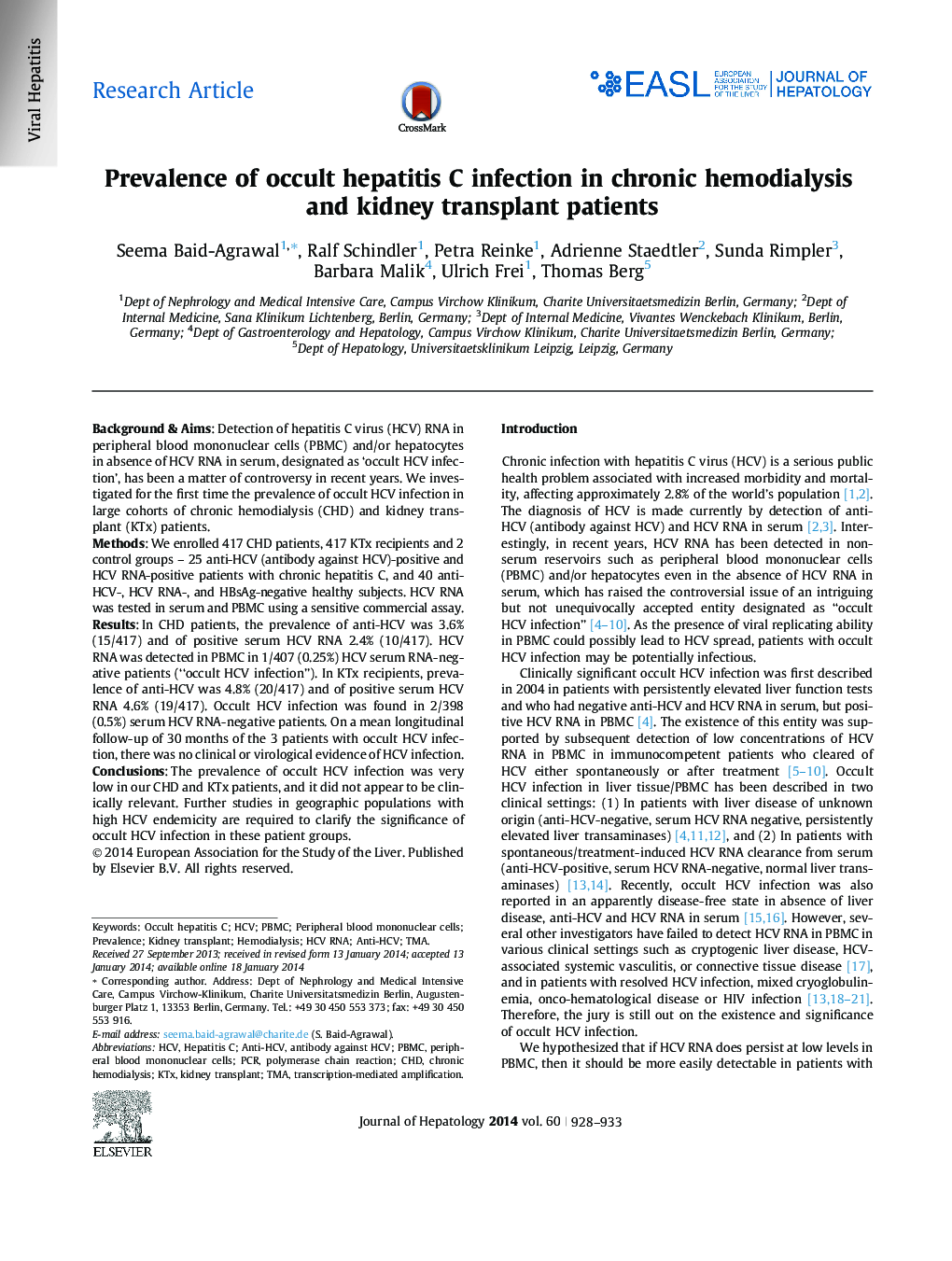| Article ID | Journal | Published Year | Pages | File Type |
|---|---|---|---|---|
| 6103564 | Journal of Hepatology | 2014 | 6 Pages |
Background & AimsDetection of hepatitis C virus (HCV) RNA in peripheral blood mononuclear cells (PBMC) and/or hepatocytes in absence of HCV RNA in serum, designated as 'occult HCV infection', has been a matter of controversy in recent years. We investigated for the first time the prevalence of occult HCV infection in large cohorts of chronic hemodialysis (CHD) and kidney transplant (KTx) patients.MethodsWe enrolled 417 CHD patients, 417 KTx recipients and 2 control groups - 25 anti-HCV (antibody against HCV)-positive and HCV RNA-positive patients with chronic hepatitis C, and 40 anti-HCV-, HCV RNA-, and HBsAg-negative healthy subjects. HCV RNA was tested in serum and PBMC using a sensitive commercial assay.ResultsIn CHD patients, the prevalence of anti-HCV was 3.6% (15/417) and of positive serum HCV RNA 2.4% (10/417). HCV RNA was detected in PBMC in 1/407 (0.25%) HCV serum RNA-negative patients (“occult HCV infection”). In KTx recipients, prevalence of anti-HCV was 4.8% (20/417) and of positive serum HCV RNA 4.6% (19/417). Occult HCV infection was found in 2/398 (0.5%) serum HCV RNA-negative patients. On a mean longitudinal follow-up of 30Â months of the 3 patients with occult HCV infection, there was no clinical or virological evidence of HCV infection.ConclusionsThe prevalence of occult HCV infection was very low in our CHD and KTx patients, and it did not appear to be clinically relevant. Further studies in geographic populations with high HCV endemicity are required to clarify the significance of occult HCV infection in these patient groups.
